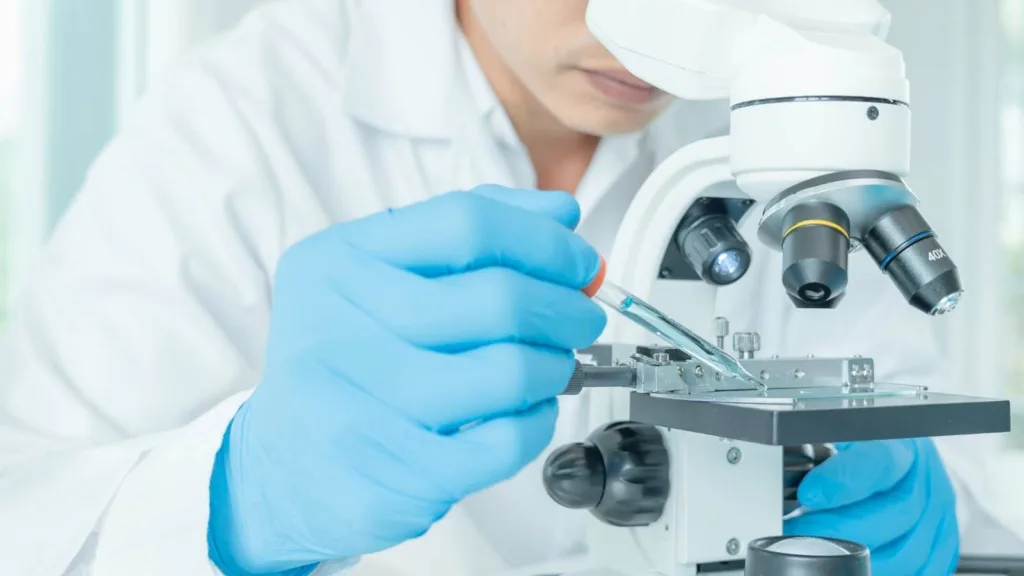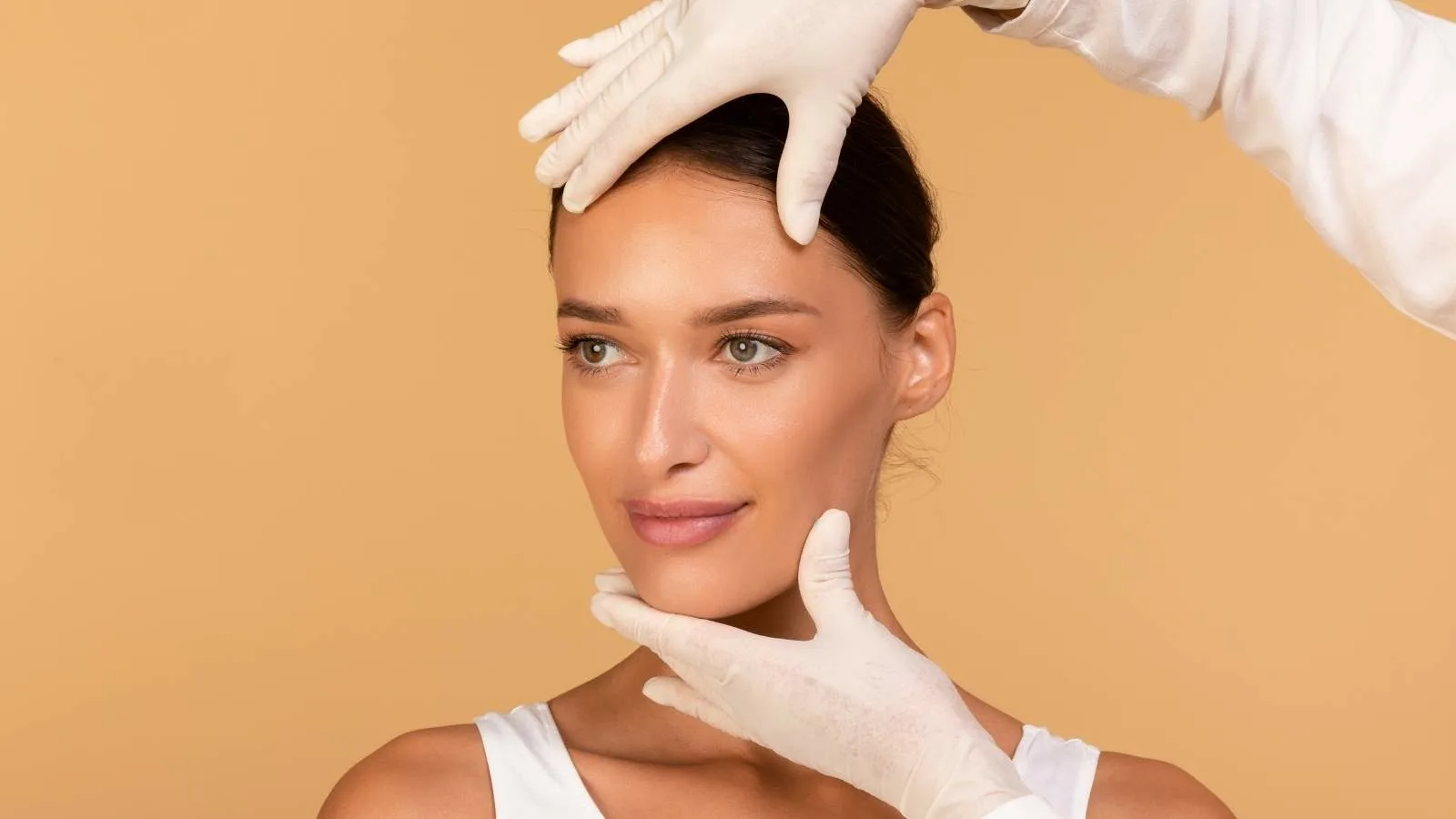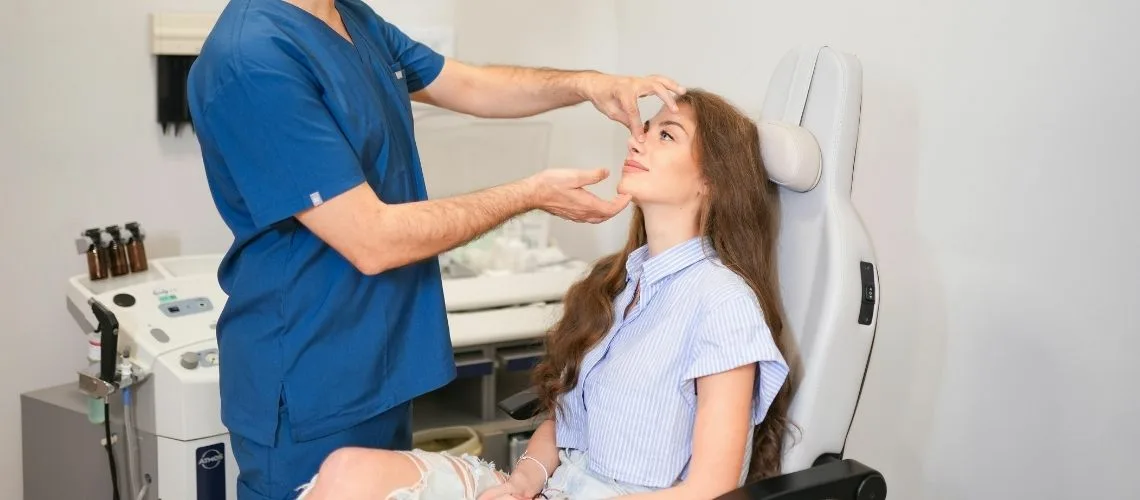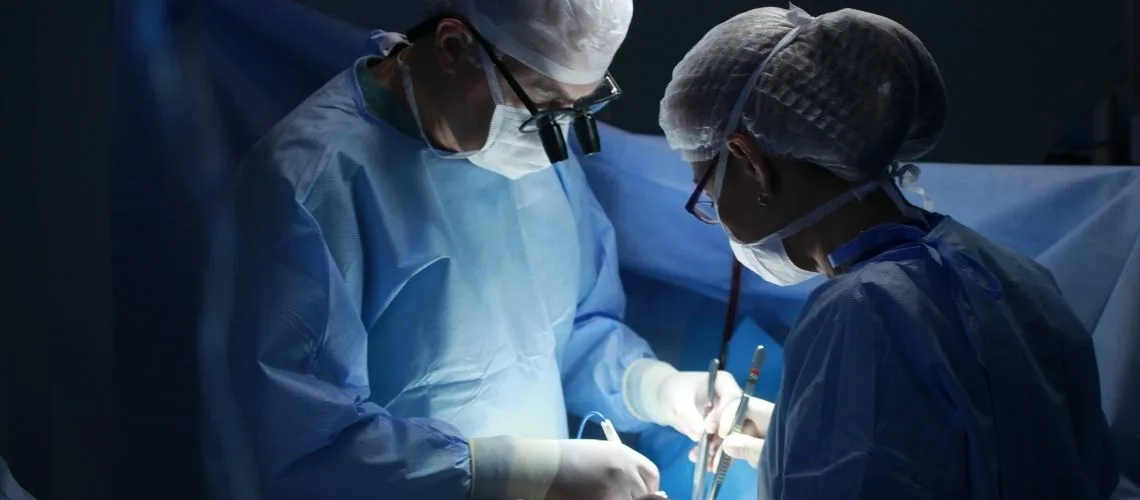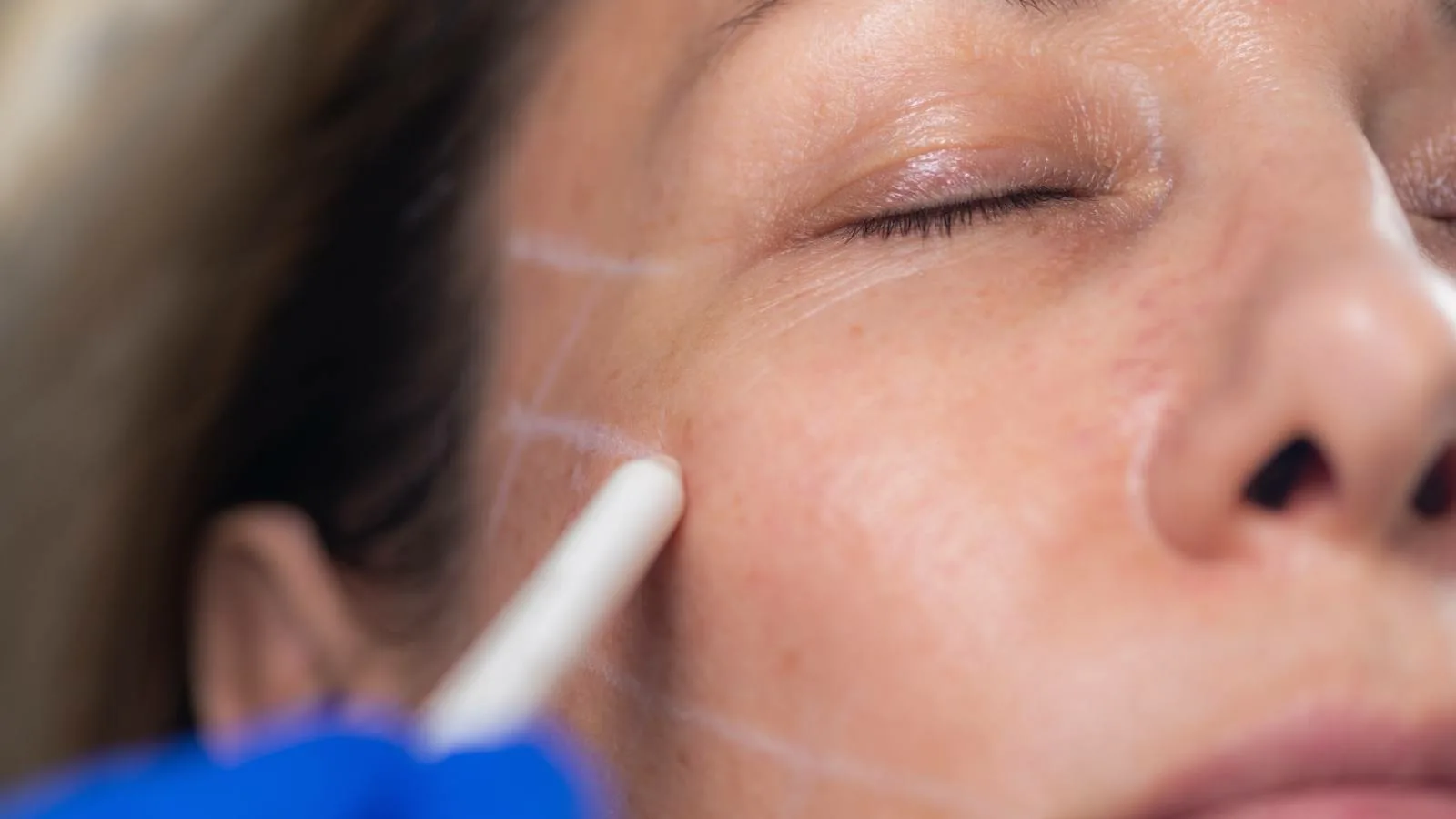Genetic factors play a significant role in plastic surgery outcomes. Personal characteristics such as skin type, healing ability, and tissue elasticity directly influence recovery, scarring, and the longevity of aesthetic results.
Individual healing response is strongly linked to genetics. Patients with favorable collagen production and strong immune systems often experience smoother recoveries and minimal scar formation after surgery.
Ethnic and hereditary traits impact surgical planning. Surgeons consider facial structure, skin pigmentation, and body proportions to achieve natural results that complement each patient’s genetic background.
Personal genetic characteristics also determine risks and benefits. Understanding family history of healing, keloid formation, or skin elasticity helps surgeons customize procedures and optimize long-term surgical success.
How Do Genetic Factors Influence the Outcomes of Aesthetic Surgery?
Our genes are the “molecular instructions” passed down to us through our parents that dictate how our body functions. For instance, many of our physical traits—our eye color, hair texture, and skin tone—are heavily determined by our genetic code. The same holds true in aesthetic surgery. Some people’s skin recovers more quickly, while others experience delayed healing. Some individuals develop less noticeable scarring, whereas others may form more pronounced scars like keloids or hypertrophic scars. These differences are rooted in genetic variations.
Skin thickness is another feature influenced by genetic factors. For example, people with thick and elastic skin may see smoother, tighter results after procedures such as rhinoplasty or facelifts. Conversely, individuals genetically predisposed to having thinner or less elastic skin might face an increased risk of postoperative skin sagging. This is why surgeons examine skin type during preoperative consultation, helping to keep surgical expectations as realistic as possible.
Genetics not only determines tissue characteristics but also influences the body’s healing pace and its susceptibility to inflammation. Some individuals may repair cuts or surgical incisions rapidly and efficiently, while others may require more time. A slower wound closure process or a higher susceptibility to infection can increase the likelihood of unwanted complications following surgery.
What Role Do Skin Type and Elasticity Play in Postoperative Outcomes?
The skin is like the canvas on which the visible result of aesthetic surgery appears. Just as the quality of a painting depends on the texture of the canvas and the quality of the paint, the final aesthetic outcome depends greatly on the skin’s quality—namely its thickness and elasticity. When you press lightly on your skin and it bounces back quickly, that “rubber-like” trait tends to be more pronounced in youth. This elasticity is a product of a system underpinned by proteins such as collagen and elastin.
Genetic variations determine how abundantly or how well these proteins are produced. Some people come into the world with skin that is “tight like a spring,” while others have thinner, more delicate skin. For instance, someone with thick and elastic skin might achieve more uniform results from procedures like abdominoplasty or liposuction. That said, having thinner skin by no means guarantees poor results; rather, the surgeon will simply take skin characteristics into account during the preoperative evaluation to project possible outcomes.
One of the most commonly used systems for understanding skin type is the Fitzpatrick Scale, but it primarily focuses on skin color and sun sensitivity. Even so, this classification reminds us that patients with darker complexions may be more prone to scarring or hyperpigmentation. Thus, genetic heritage affects not only skin thickness and elasticity but also how the skin’s color responds to healing and scar formation.
Can Wound-Healing Genetics Predict Surgical Success?
One of the most desired outcomes in aesthetic surgery is having incisions become barely noticeable, or better yet, leaving no visible scars at all. But achieving miracles in this regard often bumps up against genetic limitations. Wound healing requires a complex “repair mechanism,” and this mechanism is heavily shaped by inherited factors.
When our body attempts to repair damage, it goes through various phases: inflammation, tissue creation, and tissue remodeling. The many proteins, enzymes, and cell types involved in these phases are produced based on our genetic code. For example, certain genetic variations responsible for collagen production might lead to irregularly organized collagen fibers in the wound area. When collagen fibers are misaligned, they can result in excessive scarring, such as keloids or hypertrophic scars, which may cause both aesthetic and psychological concerns.
Another important factor is our genetically determined immune system. The collaboration of immune cells is crucial in helping wounds close and tissue reshape. Some individuals may be genetically more prone to an intense inflammatory response, which can prolong wound healing or disrupt tissue repair. Additionally, differences in genetics regarding infection resistance mean certain people are more prone to postoperative infections, adversely affecting the outcome.
The duration of wound healing and the quality of the scar depend on factors beyond just genetics—diet, lifestyle, smoking habits, and even psychological stress levels are all highly significant. Yet since we cannot change our genetic makeup, all preventive and supportive measures must be tailored to the individual. If necessary, additional treatments or medications can be used before and after surgery to aim for better scar quality and faster healing.
How Do Personality Traits Affect Decisions About Aesthetic Surgery?
When we think of aesthetic surgery, physical changes usually come to mind first. In truth, however, the reasons prompting people to consider such procedures are often intertwined with psychological factors. Many individuals turn to aesthetic operations in order to feel better about themselves, boost their self-esteem, or function more comfortably in social contexts. This is where personality traits come strongly into play.
For example, people with very organized, methodical, and “perfectionistic” tendencies (in psychology sometimes linked to high conscientiousness or high perfectionism) often arrive at the decision to have surgery after a thorough period of research. Such individuals carefully assess the potential benefits of surgery and calibrate their expectations accordingly. Their social motivation might also extend to goals like “looking better to gain an edge in professional or personal situations.”
Meanwhile, those who exhibit high levels of anxiety or “neurotic” traits (a topic we will explore further in the next section) might make the decision to have surgery because of obsessions regarding their appearance. These individuals may expect a miraculous “acceptance of self” from aesthetic surgery. However, if they begin with unrealistic expectations, they could end up dissatisfied even if the technical outcome is highly successful. Consequently, it is extremely important for surgeons to understand a patient’s motivations, expectations, and overall psychological state before the operation.
In addition, societal interactions also shape surgical decisions in line with personality traits. More extroverted individuals who enjoy socializing might pursue aesthetic procedures as they strive for a “flawless” look on social media. Those who are more introverted, on the other hand, might keep their distance from surgery altogether unless there is a serious physical complaint involved.
Is Neuroticism Associated with Postoperative Dissatisfaction?
Individuals with neurotic tendencies experience emotions intensely and are often prone to negative feelings such as anxiety, anger, or sadness. This predisposition influences not only daily social interactions but also the aesthetic surgery experience. They may go into the research phase for surgery beset by anxiety, worrying constantly about questions like “What if I don’t get the results I want?” or “Will this procedure really help me?”
The same outlook can persist after the operation. Even a highly successful procedure might not feel “good enough” to someone with neurotic traits. The negative emotional flow in their mind may cause them to blow minor imperfections out of proportion. For instance, a person who undergoes a rhinoplasty and achieves a vastly improved nasal shape compared to before may still zero in on a tiny asymmetry in the mirror, magnifying it and feeling disappointed.
In such cases, the surgical team’s key responsibility is to understand the patient’s expectations before surgery and make them as realistic as possible. People with neurotic tendencies might approach the situation with, “If it doesn’t turn out exactly how I want, my life will be ruined.” Under these circumstances, receiving additional psychological support or at least proper information can be very helpful. During the postoperative period, every small swelling, redness, or unanticipated development may cause anxiety far beyond what one would consider normal, precisely because of a neurotic disposition. Thus, neuroticism is an important personality trait that can hinder satisfaction with aesthetic surgery outcomes. Yet it does not necessarily doom the surgery to failure; with effective communication and realistic goals, a patient’s sense of satisfaction can still be increased.
Why Does Self-Esteem Trigger Interest in Aesthetic Surgery?
Self-esteem, or self-worth, refers to the value a person places on themselves, and body image is a key aspect of that sense of worth. Sometimes even a small dissatisfaction with our appearance can have a bigger impact on our self-confidence than we realize. For example, someone unhappy about a hump on the tip of their nose may become so conscious of it when speaking in public that they cannot give their full attention to their talk. In this context, aesthetic surgery offers not only a physical correction but also the promise of psychological relief.
People with low self-esteem may feel more shame or anxiety about “flaws” they perceive in themselves. This mindset can fuel thoughts like “If only my nose were smaller, maybe I’d act more confidently.” In a sense, they may view aesthetic surgery as a “magic wand.” The critical question here is the true purpose of the operation and whether the patient’s expectations are realistic. If the individual is going through a difficult personal crisis and the core issue is more about emotional dissatisfaction than actual physical appearance, surgery alone may not fill that void.
Still, a well-planned aesthetic procedure can help boost a person’s self-esteem. For instance, someone who has long disliked the outward protrusion of their ears and has therefore always worn their hair down might, after a simple ear procedure, feel comfortable wearing their hair up and be more at ease in social settings. Cases like these show how a relatively minor physical adjustment can positively influence how we present ourselves and carry ourselves socially. Yet it is important to remember that when it comes to self-esteem, physical appearance is only one part of the equation; an individual’s overall sense of self-acceptance and inner peace are often just as, if not more, significant.
Do Genetic Markers Affect Pain Tolerance During the Healing Process?
Pain tolerance is an emotional and physiological process that varies widely among individuals. The difference between someone easily coping with childbirth pain and another person struggling deeply with a simple toothache can be substantial, and genetic factors partly underpin these differences. Everything from how our pain receptors function to how sensitive our nerve cells are is influenced by our genes.
For example, certain genetic variations regulating the metabolism of neurotransmitters such as dopamine and norepinephrine can raise or lower an individual’s pain threshold. Variations in genes like COMT (catechol-O-methyl transferase) and OPRM1 (opioid receptor) may cause some people to feel pain more intensely while enabling others to cope more easily. Therefore, after an aesthetic surgery, rather than asking, “Why am I still in pain when someone else recovered in three days?” it can be helpful to realize that this may reflect a personal and genetic difference.
Of course, environmental and psychological factors also play a role in shaping one’s tolerance for discomfort. Conditions like anxiety disorders or a tendency toward depression can amplify the perception of pain. Still, genetic predisposition can be highly informative for postoperative pain management. Some patients may find standard pain relievers sufficient, whereas others might need different treatment protocols or additional pain relief methods.
How Does Tissue Formation Genetics Influence Patient Satisfaction?
Tissue formation is one of the most frequently asked-about aspects of aesthetic surgery recovery. For instance, in a breast augmentation, questions might arise about how tissue will form around the implant, or in a rhinoplasty, how uniformly the tissue will fuse after the incisions. These concerns directly impact the procedure’s success and, consequently, how satisfied the patient feels. Why, then, is tissue formation genetics so critical in this process?
The body’s generation of new tissue depends on fibroblast cells and structural components like collagen working together in harmony. Certain genetic variants can cause these cells to be overly active, leading to the production of excess tissue and resulting in issues like keloid or hypertrophic scarring. On the other hand, less active fibroblasts might not produce enough of the tissue fibers needed for healthy wound healing. Both scenarios can lead to scars that are cosmetically unsatisfactory.
Furthermore, tissue formation genetics isn’t limited to scar quality alone. It can also affect how well the body accepts foreign materials used during surgery (such as implants or sutures). Individuals with higher inflammatory responses may develop capsular contracture or chronic irritation around implants. For example, the tissue surrounding a breast implant may become unusually rigid, potentially requiring revision surgery.
Can Genetic Testing Improve Personalized Aesthetic Surgery Plans?
With rapid advances in technology, the idea of “personalized medicine” is gaining increasing attention. While genetic testing is already used in oncology and cardiology, it may also provide new possibilities for aesthetic surgery. So, what role could genetic testing play in planning cosmetic procedures?
Firstly, genetic indicators related to wound healing, scarring tendencies, and tissue acceptance could help predict postoperative risks a patient might face. For instance, if a person is found through genetic testing to be susceptible to keloids, the surgical incision placement or postoperative treatments can be tailored more cautiously. Additionally, patients whose inflammatory genes are highly active or who are prone to infections could receive preventive antibiotic therapies or other protective measures.
Another benefit of genetic testing involves pain management. Certain individuals metabolize some pain relievers differently than others—some more slowly, some more quickly. Knowing these differences helps determine the most suitable postoperative pain control for each patient, enhancing comfort and minimizing drug side effects.
Of course, before genetic testing becomes routine in aesthetic surgery, cost, availability, and ethical considerations must be weighed. Also, genetic information alone does not guarantee “perfect” surgical outcomes. Nonetheless, such tests form a foundation for a more personalized approach to aesthetic surgery. They can help surgeons make more accurate forecasts in collaboration with patients and lower the risk of complications. In the future, more widespread use of these methods could make “custom-designed” aesthetic surgeries standard practice.
Do Patients with High Rejection Sensitivity Seek Surgery More Often?
“Rejection sensitivity” refers to a tendency to overreact to any perceived or actual signal of rejection. People with this trait may experience intense fear or anxiety even when faced with the smallest hint of criticism, disapproval, or exclusion. How does this personality trait influence one’s desire for aesthetic surgery?
For starters, those who are highly sensitive to rejection may fear being judged for their appearance. In the age of social media, where everyone shares photos subject to public opinion, such individuals might feel an extra burden of stress due to worries about “not receiving enough likes” or receiving negative comments. If someone is often criticized for the shape of their nose or how far their ears stick out, the thought “What if they reject me?” could constantly gnaw at them. This psychological tension might be a significant motivating factor for seeking a procedure.
However, an increased desire for surgery isn’t always driven by a healthy motivation. A person with heightened rejection sensitivity might pursue an operation for external approval, without objectively assessing whether they truly need it. In such situations, the surgery might not resolve the deeper-rooted fears in that individual’s emotional world. In fact, if they fail to receive the acceptance or admiration they anticipate after the procedure, their disappointment might worsen.
Thus, when dealing with patients who have a high sensitivity to rejection, it’s important to identify their expectations for surgery and assess how realistic they are. In some cases, psychological counseling before or after the operation can be highly beneficial in helping overcome these anxieties. Physical changes do not always fulfill emotional needs; the key is balancing bodily and mental well-being.
Does Inflammation Genetics Play a Role in Postoperative Complications?
The body’s inflammatory response is one of the most important reactions after surgery. In the initial healing phase, blood flow to the wound site delivers defensive cells and other components that support healing—a natural process. But when inflammation becomes too prolonged or overly intense, it can hinder wound repair and raise the risk of infection. This is another instance where genetic factors act like the “conductor” directing the orchestra.
Certain individuals carry genetic mutations leading to higher production of cytokines such as IL-6 or TNF-α. These substances can cause prolonged inflammation at the surgical site, making tissue repair more difficult. In practical terms, a patient might be more susceptible to postoperative infections or end up with more pronounced scarring than expected. Prolonged inflammation also negatively affects patient comfort: symptoms like pain and swelling take longer to subside.
Genetic predisposition influences not only the intensity but also the duration of inflammation. If a person is at risk for “chronic inflammation,” signs like redness, pain, or tissue hardening in the operated area can extend beyond normal levels. This can delay a patient’s return to social life, reduce their ability to resume daily activities, and sometimes necessitate additional treatment.
How Do Social Motivations Interact with Genetic Factors?
One of the biggest drivers behind aesthetic surgery can be the desire for “social approval.” Some people seek cosmetic interventions to align with societal beauty standards or to gain a better position in their social sphere. How do these social motivations intersect with genetic factors?
First, the innate physical traits we inherit shape our experiences within our social environments. For example, someone genetically predisposed to a more angular facial structure yet unhappy with it may often connect that trait to external feedback. If they frequently hear comments like “You look stern” or “You have a severe expression,” they might withdraw socially or, conversely, decide to change that feature through aesthetic surgery to avoid further remarks. Thus, a genetically determined bodily feature merges with social motivations, ultimately leading to a decision about surgery.
Personality traits also come into play, influenced by genetic components. An extroverted individual who frequently posts photos on social media may be quick to seek aesthetic corrections for even minor perceived “flaws.” Conversely, someone more introverted, or with a lower need for social approval, may not be overly concerned about having a large nose or protruding ears.
Of course, cultural factors also shape this dynamic. Certain societies hold up specific facial or body features as the “ideal.” People may interpret genetic features that deviate from these norms as a disadvantage, thus increasing the likelihood of seeking surgery. Meanwhile, family structures, economic conditions, and personal values can either mitigate or intensify such motivations. In short, genetics and social motivations are in constant interaction: our genetic background affects how we relate to the social environment, and social norms can pressure us to accept or reject our genetically inherited attributes.
Could Integrating Genetic and Psychological Insights Improve Patient Outcomes?
Contemporary aesthetic surgery has produced many innovations aimed at improving outcomes—things like laser technologies, refined surgical methods, and rapid-recovery protocols have all advanced the “technical” side of surgery. However, fusing genetic data with psychological factors remains relatively new in this field.
For instance, a basic genetic screening conducted before surgery might provide insights into a patient’s wound-healing capacity, propensity for scarring, or even pain tolerance. Simultaneously, a psychological evaluation could clarify their expectations, self-confidence level, neurotic tendencies, or rejection sensitivity. Combining these two domains—genetic and psychological—brings a more personalized dimension to the preoperative plan.
Here’s an example: Suppose a person has a genetic predisposition to high keloid risk and also shows a neurotic temperament. In such a situation, the surgeon could plan the procedure and incision lines in a way that minimizes keloid formation. They might also devise a special protocol for scar management—perhaps silicone gel, laser treatments, or pressure bandages—post-surgery. Meanwhile, from a psychological standpoint, strategies like preoperative counseling or collaboration with a therapist can help reduce the individual’s anxiety level and align expectations with reality. This approach addresses both physical and mental aspects holistically.
In the long run, merging genetic and psychological information to reinforce a “personalized aesthetic surgery” approach can markedly boost patient satisfaction. The individual would not only attain the physical enhancements they desire but also feel secure during the entire process, ultimately increasing their satisfaction with the results. Consequently, modern aesthetic surgery is evolving beyond the question “How can I perform the surgery better?” to include “How can I consider this person’s genetic and psychological background?” The future likely holds a standard practice where these considerations become part and parcel of aesthetic interventions.
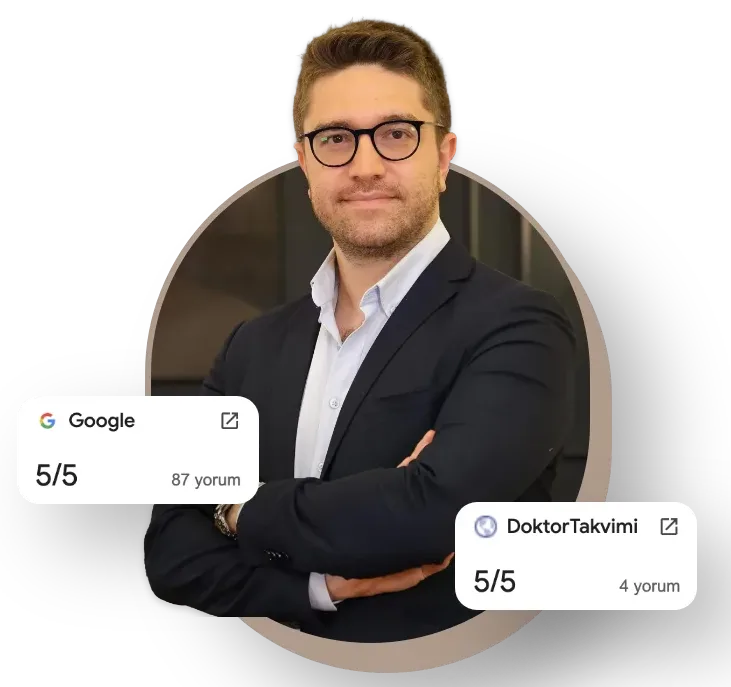
Op. Dr. Erman Ak is an internationally experienced specialist known for facial, breast, and body contouring surgeries in the field of aesthetic surgery. With his natural result–oriented surgical philosophy, modern techniques, and artistic vision, he is among the leading names in aesthetic surgery in Türkiye. A graduate of Hacettepe University Faculty of Medicine, Dr. Ak completed his residency at the Istanbul University Çapa Faculty of Medicine, Department of Plastic, Reconstructive and Aesthetic Surgery.
During his training, he received advanced microsurgery education from Prof. Dr. Fu Chan Wei at the Taiwan Chang Gung Memorial Hospital and was awarded the European Aesthetic Plastic Surgery Qualification by the European Board of Plastic Surgery (EBOPRAS). He also conducted advanced studies on facial and breast aesthetics as an ISAPS fellow at the Villa Bella Clinic (Italy) with Prof. Dr. Giovanni and Chiara Botti.
Op. Dr. Erman Ak approaches aesthetic surgery as a personalized art, tailoring each patient’s treatment according to facial proportions, skin structure, and natural aesthetic harmony. His expertise includes deep-plane face and neck lift, lip lift, buccal fat removal (bichectomy), breast augmentation and lifting, abdominoplasty, liposuction, BBL, and mommy makeover. He currently provides safe, natural, and holistic aesthetic treatments using modern techniques in his private clinic in Istanbul.

